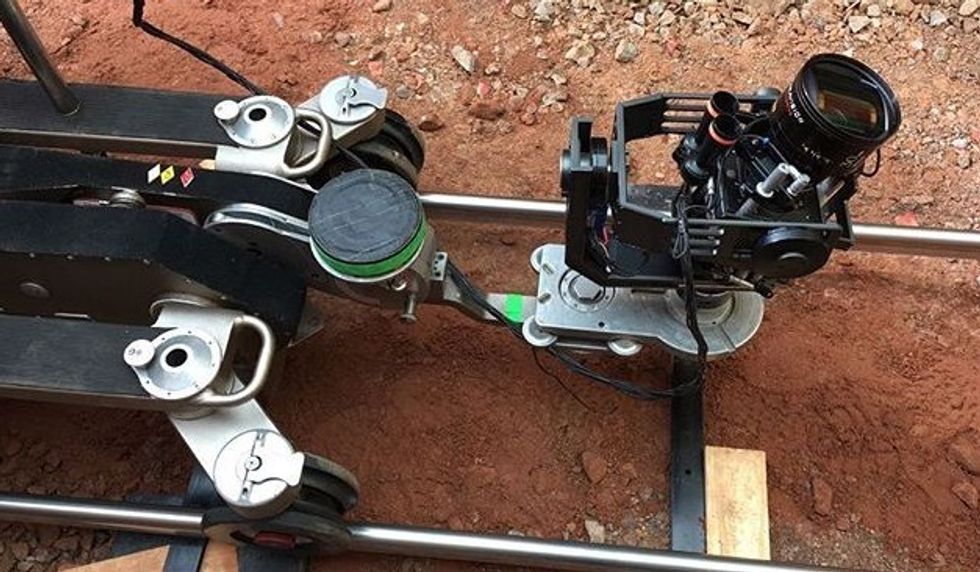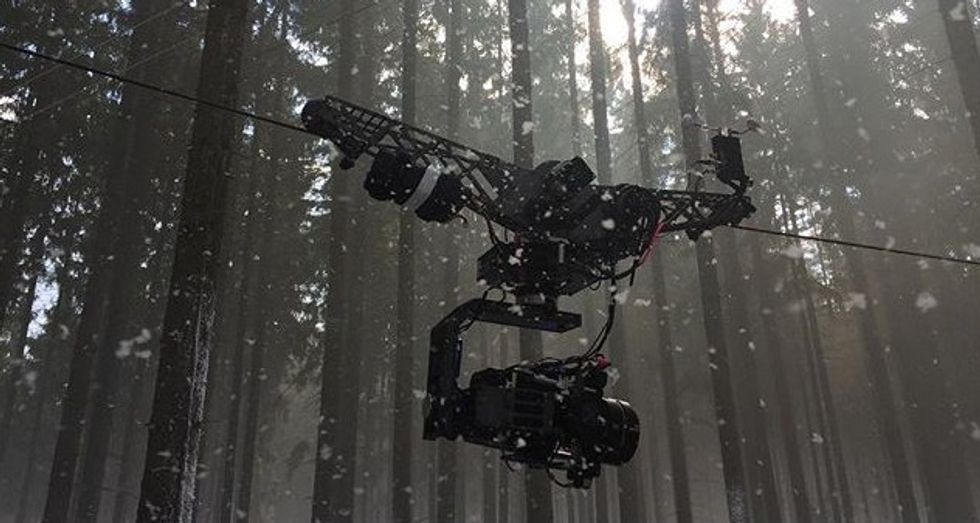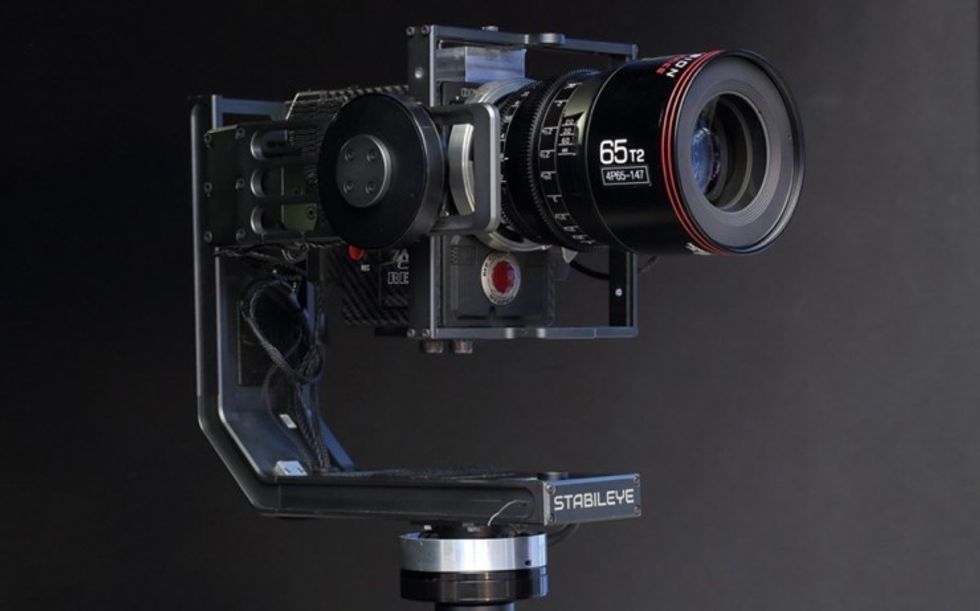A Closer Look at Stabileye, One of the Stabilizers Roger Deakins Used on '1917'
A versatile stabilizer filmmakers can use for nearly any situation.
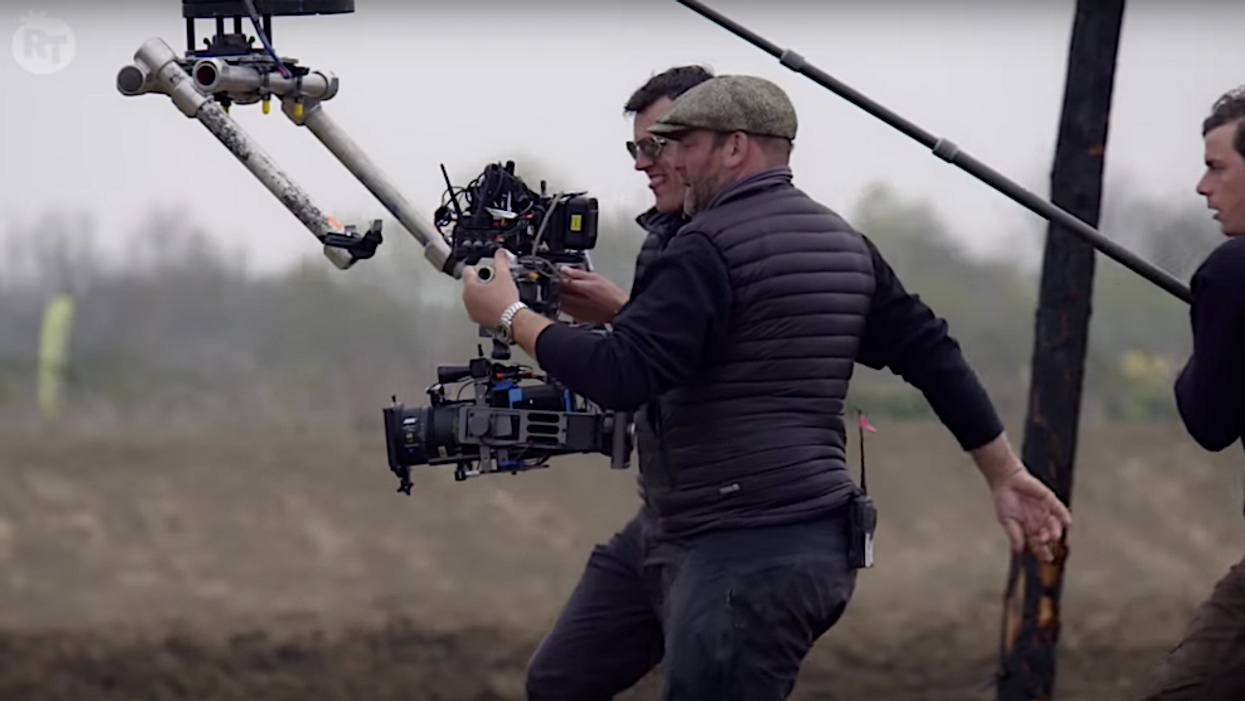
Cinematographer Rodger Deakins won an Oscar for 1917, a film No Film School has covered extensively with a podcast, an interview with Deakins, through untold insights with key collaborators, and several behind-the-scenes features, including its cameras and hidden cuts.
While discussing workflow, Deakins detailed how the team pulled off its epic shots, including mounting the camera to vehicles, Technocranes, the ARRI Trinity, and a rig called Stabileye. The latter was a name new to me. Deakins pointed out it was made by a company in the U.K., and something the cinematographer had been using for years, saying, he prefers it over a Movi. So what is it?
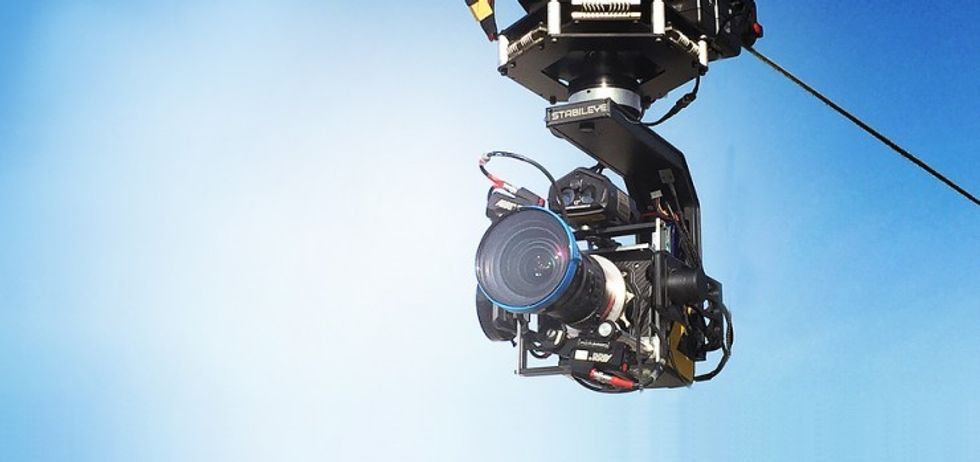
Stabileye is not just a gimbal, but a miniature stabilized head that weighs 7.7 lbs (3.5 kgs). It's a modular system where the camera is built into an interface and that interface becomes Stabileye. There are different interfaces for each camera type, including RED, ARRI, Sony VENICE, and others. It can be operated handheld, mounted on cranes, cars, or a cablecam system like Dactylcam and High Sight. In other words, it's versatile—an attribute filmmakers prefer over a one-hit-wonder.
On paper, it puts itself in competition with products like Freefly's Movi series, and like Movi, it's a tool filmmakers should at least have on their radar. #themoreyouknow.
Besides 1917, Stabileye has been used on several projects, including, Darkest Hour, Guardians of the Galaxy Vol. 2, and The Commuter, which stars my favorite actor with "a very particular set of skills." We reached out to one of its creators, Dave Freeth, to find out more about Stabileye.
NFS: Stabileye has been called a handheld dolly system, a stabilizer… What is it to you?
David Freeth: Stabileye has been called many things, but essentially it's a very small stabilized head that can be used as a handheld shooting platform, with absolutely perfect stability.
NFS: When did you first come up with the idea?
Freeth: About 5 years ago while still working as a Libra technician, I saw the need for a very small stabilized head. We were building drones back then, but it wasn’t until digital cameras started to gain momentum and start to shrink that the first Stabileye was made. That one was all about being used under a drone.
NFS: So Stabileye saw its first work with drones?
Freeth: The early days of drones. There were some very nail-biting moments that made us decide to switch drones for wire rigs and so we made our first motorized wire system the StabiLine. Now we are no longer hobbled by CAA and FAA weight limitations and can carry bigger payloads.
NFS: What comes in a basic Stabileye package?
Freeth: We send out Stabileye as a package with its monitor, video transmitter, backpack, cables, and support for any situation. We include a complete spare head and controller as a backup on most jobs. This is something we started doing from the beginning because it was always used in the harshest of situations and we expected things to get damaged. We’ve learned over the years that Stabileye is as tough as old boots and the spares often don’t get called upon.
We also include a range of ironmongery to do the basics. In the U.K., it's often seen as grip equipment, and by nature, grips always have the means and resources to mount and rig anywhere.
NFS: Is there a payload limitation with Stabileye?
Freeth: It’s not uncommon to see very big camera/lens combinations on our systems. It can handle the weight, even off-balance, but I do feel that if it gets too heavy it stops becoming “the thing you can hold for long takes” without being encumbered by some kind of vest support. Stabileye is a tool in the cinematographer’s toolbox, and like all equipment, has its strong and weak points. I wouldn’t want to hold it still to do a long dialogue scene, so there comes a point when other equipment has its time to shine, but our strength is in our versatility.
NFS: 1917 showed its full potential, but how is it generally used?
Freeth: It’s often used conventionally as a small remote stabilized head. For example, on a Technocrane. In this mode, it’s about the same size as the cranes’ front section so you can really get close to the actors' heads when shooting. Literally over-the-shoulder. It can also be used in “matrix mode” where it's mounted pointing straight out. We are often asked if it can be operated as a gimbal. It can, but it’s quite rare to be used in this way. We have a smaller, whip- pan enabled version called the Nano, which is a true handheld stabilizing device. These were designed around cinematographer Henry Braham’s specification and are currently seeing action on Suicide Squad 2.
NFS: Have you seen Stabileye used in ways that surprised you?
Freeth: It’s been strapped to a mechanical bucking bull, subjected to forces of over 6G on a stunt car, used on motorcycles, pushbikes, boats, and even a skateboard. I’ve seen a 100mm lens used handheld—running flat out across a set with perfect results. I also witnessed it being used by a jockey on a galloping horse. It always makes me smile to see crew watching the playback, but I’m most proud to have the lens performance and stabilization approved by the editors and VFX departments for large screens.
NFS: Where is it available?
Freeth: Currently, we service everything from our base here in the United Kingdom, but we are considering expanding into overseas markets. Right now, Stabileye is a rental-only item. We also have a version which we call the Stabileye X. This version is all built at 45-degree angles and allows full matrix mode with the ability to put the camera on the floor (or the ceiling) and still look all the way up or down without seeing itself.
You can find out more about Stabileye here. If you used Stabileye or another model on a production, let us know in the comments.
